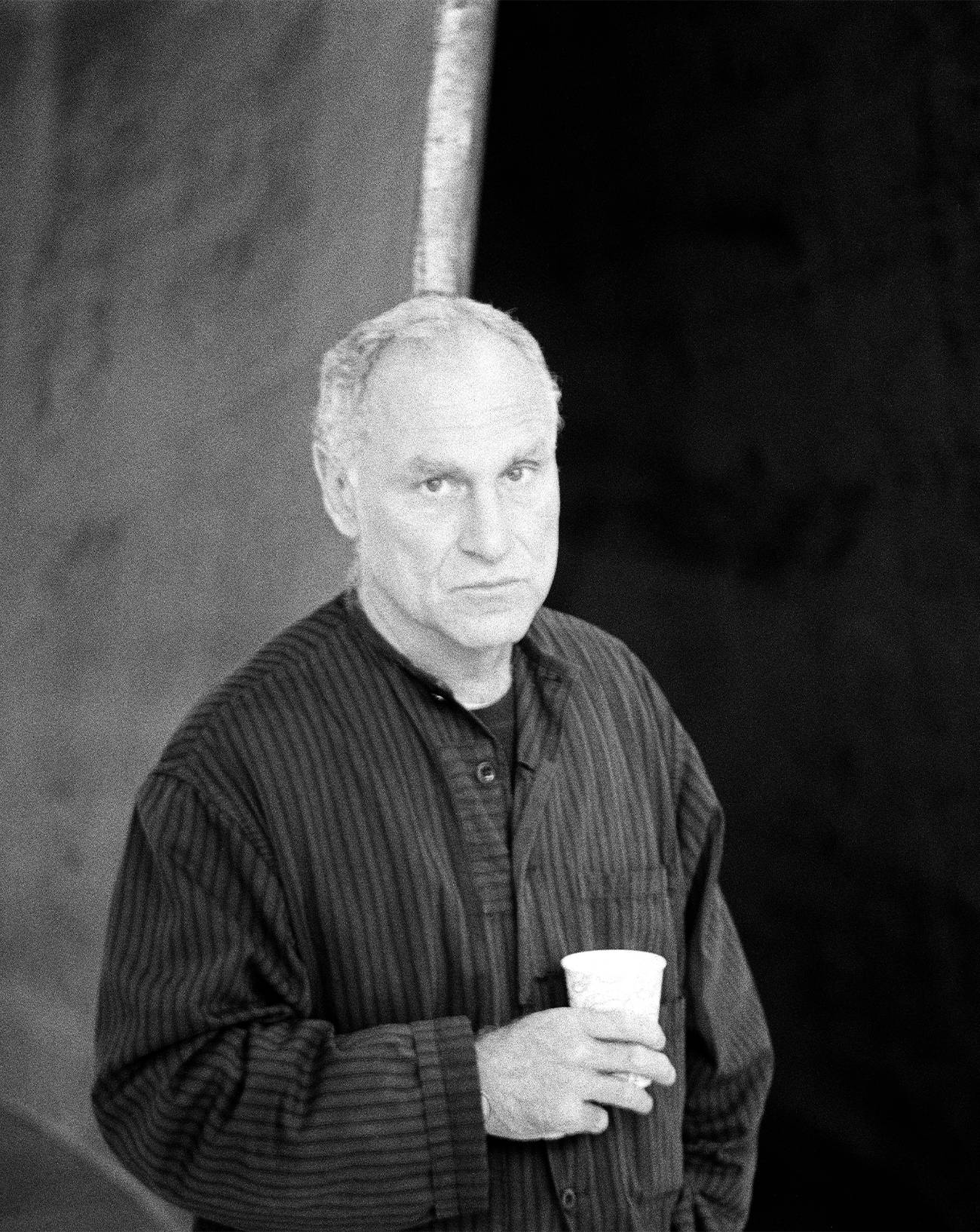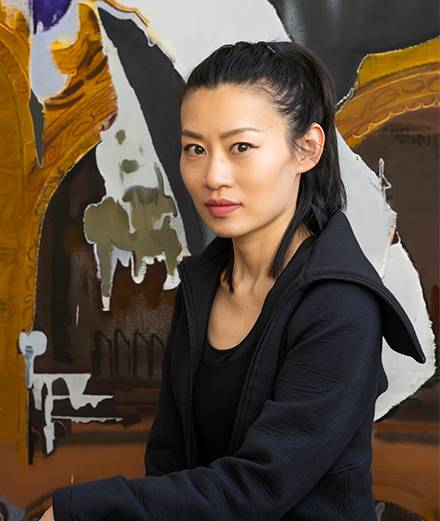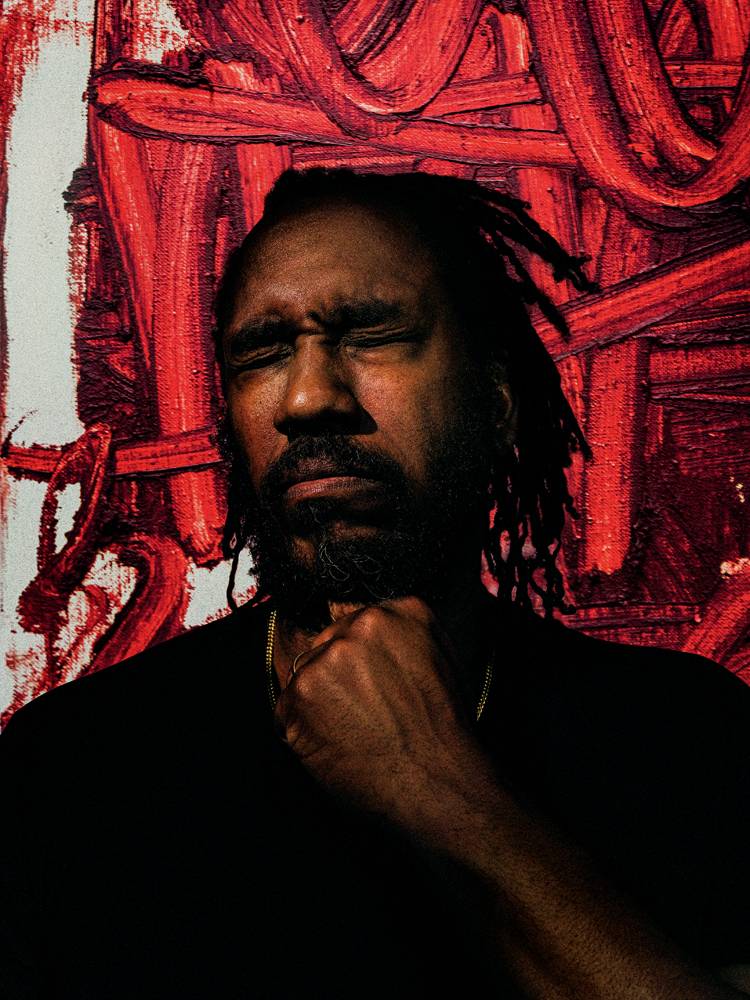Courtesy the artist and galerie Sultana
1. Matthias Garcia’s springtime phatasmagoria
Matthias Garcia’s favorite season is no secret : spring. But no regular spring, an eternal one where human and nature unite, where ground and water meet to form plentiful and joyful landscapes. Lustful nymphs and two-headed sirens live there together, flowers have baby faces while young girls wander through climbing plants, all of which are born from this young painter’s imaginary. His childlike characters merge into the greenery, become youthful ghosts lost in the toned down hues of his paintings, while he awakens them with the help of some bright pigments. The 26 year-old artist, who just graduated from Paris’ school of fine arts, does not shy away from working on various formats, be them very small or very large ones. On canvas, he adds layers an layers of oil and acrylic painting to generate texture as well as creating allegories of our subconscious’ depths.
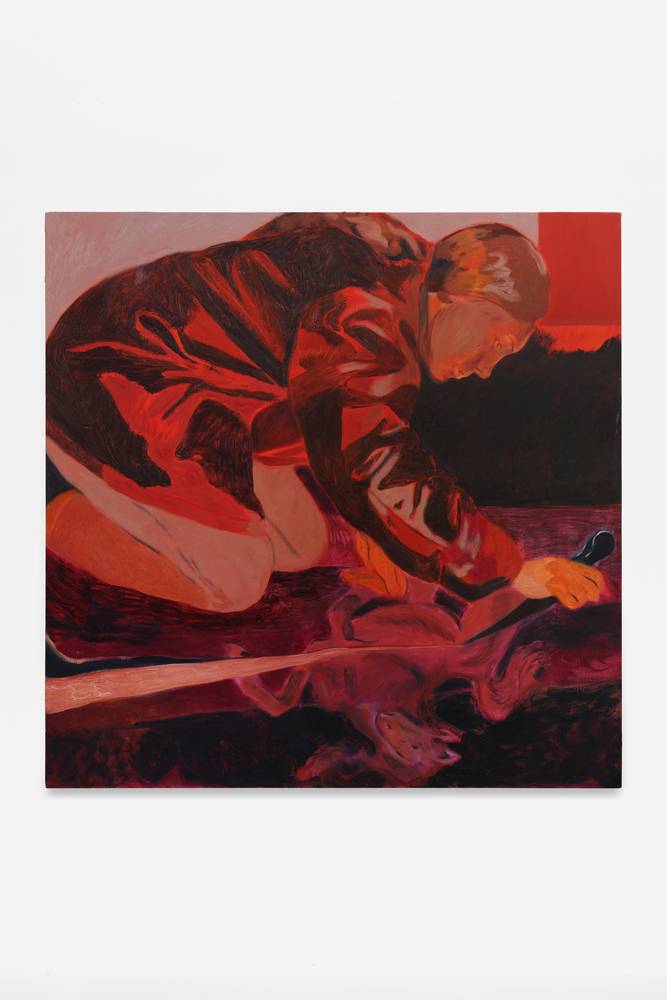
Anthony Cudahy, “Cutting terror” (2021). Photo : A. Mole. Courtesy Semiose, Paris

Anthony Cudahy, “Self-portrait after Hockney '83“ (2021). Photo : A. Mole Courtesy Semiose, Paris
2. Anthony Cudahy’s expressive genre painting
History painting and portrait have long dominated pictorial genres’ hierarchy. Another has flourished since the XVIIth century : genre painting, staging no hero nor heroic scene but an ordinary daily moment whose triviality becomes extraordinary. While French artists Jean-Simeon Chardin and Jean-Baptiste Greuze became masters of this genre during the 1700s, American painter Anthony Cudahy seems to carry on their legacy. His works’ characters are so involved in their action that they become oblivious to the viewer’s presence : some are having a nighttime intimate conversations, others are focused on tearing a canvas up or setting a camera up. From one painting to the other, these bits sometimes write a narrative, providing multiple angles to a same scene. The artist’s singularity lies in his expressiveness : his vigorous lines brush or scratch the canvas, while his luminous colors inform us on the scene’s emotions at stake. While blue is about dreams and softness, yellow conveys joy and glory and red, wrath and passion.
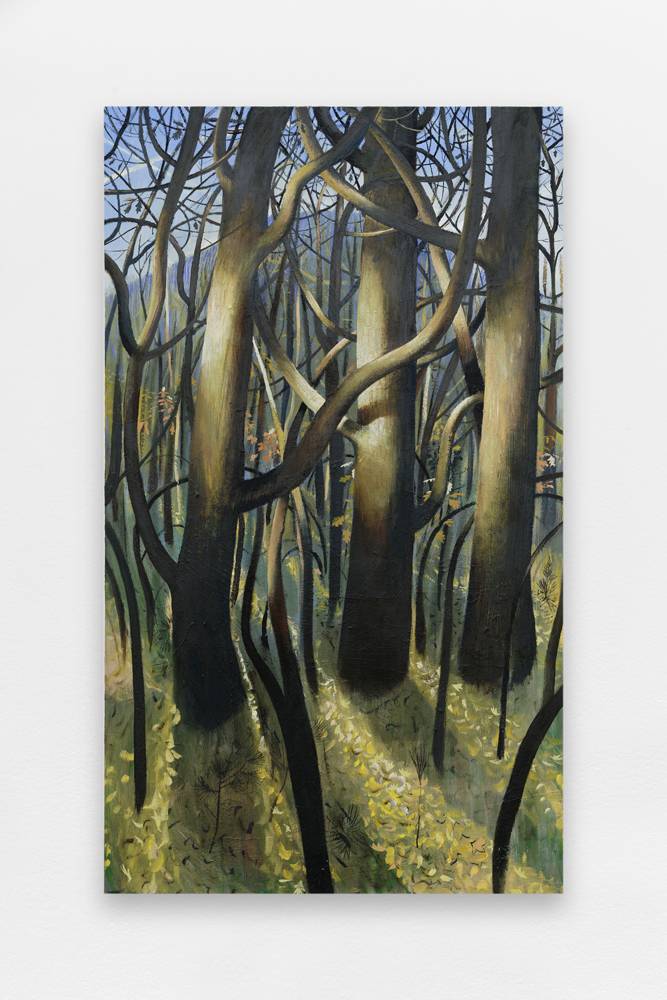
Louis Fratino, “October”. Courtesy the Artist and Ciaccia Levi, Paris. Photographe : Aurélien Mole
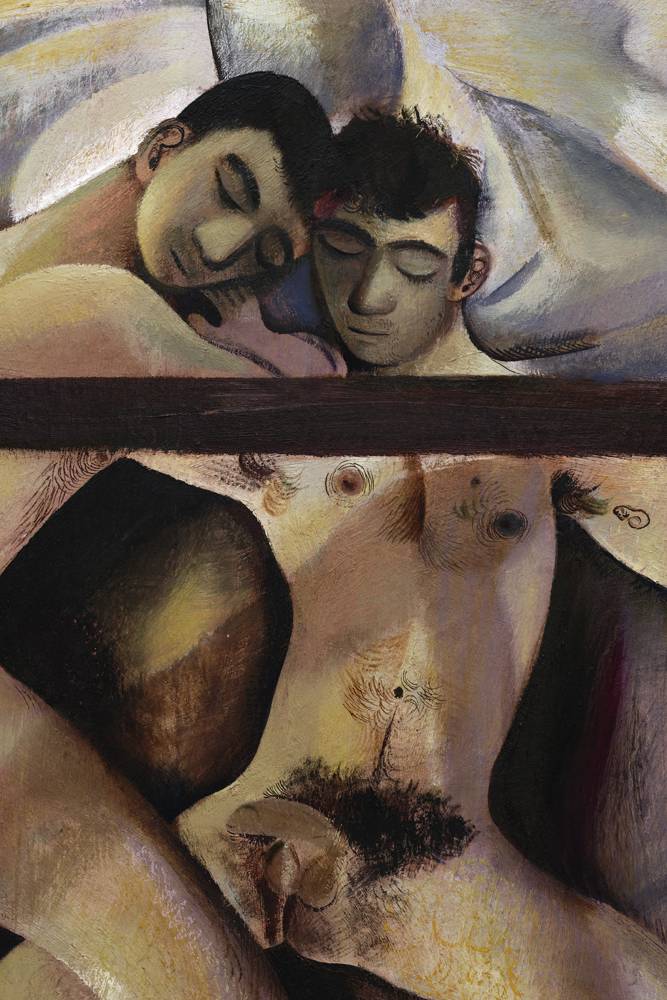
Louis Fratino, “Four Poster Bed”. Courtesy the Artist and Ciaccia Levi, Paris. Photographe : Aurélien Mole
3. Louis Fratino’s tender and domestic homoeroticism
Painter Louis Fratino’s gesture is as round and tender as his subjects. While his brush strokes the canvas with circular continuous movements to make his shapes appear, his pencil scribbles and tickles them to bring out some texture and details. Tenderness also lies in the muscular masculine bodies starring in his works, lying and hugging themselves in those homoerotic scenes. Fratino’s attention to two-dimensionality is obvious : hieroglyphs, bas-reliefs, cubist and naive paintings all seem to influence his practice, in which he brings most of his subjects to the forefront. Queer couple’s domesticity is their core theme : thanks to warm colors, the painter creates welcoming and intimate homes, enhanced by lit fireplaces and tables filled with meals and bouquets of flowers. He also recently imagined bare automnal landscapes with trees and swallows, bordering on contemplative melancholy.










